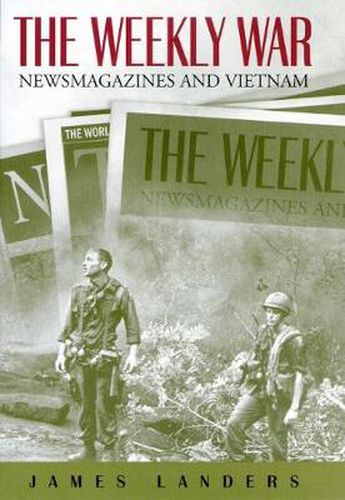Readings Newsletter
Become a Readings Member to make your shopping experience even easier.
Sign in or sign up for free!
You’re not far away from qualifying for FREE standard shipping within Australia
You’ve qualified for FREE standard shipping within Australia
The cart is loading…






In The Weekly War, James Landers provides the first in-depth investigation of how the three major newsmagazines - Newsweek, Time, and U.S. News & World Report - covered the Vietnam War and the impact their coverage had on the American public, presidents, and policymakers. From March 1965 through January 1973 these magazines reached nearly one-third of adult Americans. No other sources of general news with national distribution came close to those numbers - contradicting the general impression that this was primarily a
television war.
While television reporting provided a here-and-now version of events, these magazines published articles that combined on-the-scene coverage with analysis and commentary. Because these publications worked on a more leisurely weekly deadline, as opposed to the daily deadlines of television or newspapers, they were able to provide distinct perspectives on the week’s events, along with factual material. The writing was typically more vivid and detailed than that of newspapers, and the extensive use of color photographs contributed to the impact of the stories themselves.
$9.00 standard shipping within Australia
FREE standard shipping within Australia for orders over $100.00
Express & International shipping calculated at checkout
In The Weekly War, James Landers provides the first in-depth investigation of how the three major newsmagazines - Newsweek, Time, and U.S. News & World Report - covered the Vietnam War and the impact their coverage had on the American public, presidents, and policymakers. From March 1965 through January 1973 these magazines reached nearly one-third of adult Americans. No other sources of general news with national distribution came close to those numbers - contradicting the general impression that this was primarily a
television war.
While television reporting provided a here-and-now version of events, these magazines published articles that combined on-the-scene coverage with analysis and commentary. Because these publications worked on a more leisurely weekly deadline, as opposed to the daily deadlines of television or newspapers, they were able to provide distinct perspectives on the week’s events, along with factual material. The writing was typically more vivid and detailed than that of newspapers, and the extensive use of color photographs contributed to the impact of the stories themselves.